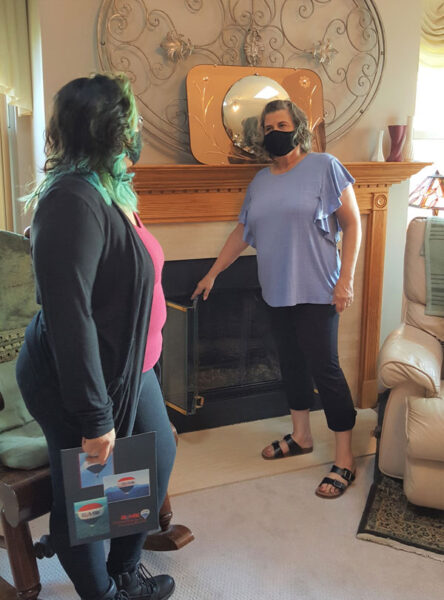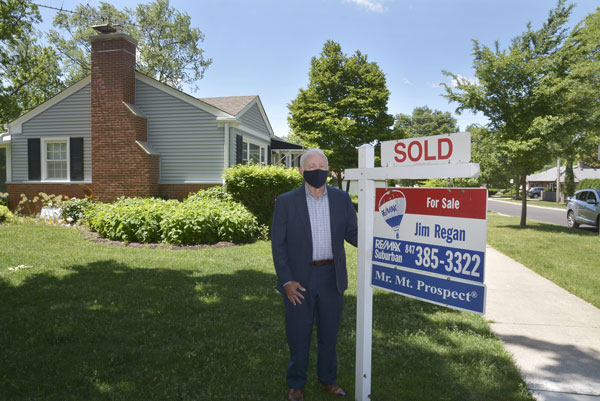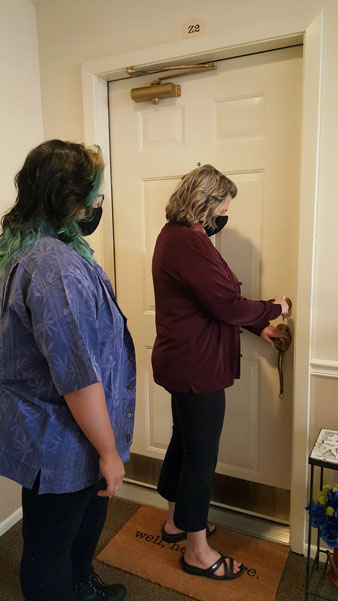The COVID-19 pandemic prompted many people who lived in urban apartments and condominiums to search for a suburban home that had space for them to work from home without sitting on their bed and space for their children to attend school online.

But it also prompted many who had a comfortable suburban home to stay put in a familiar space. So, housing stock during the health crisis was tight, prompting many offers on available homes . . . and even bidding wars.
“Personally, I had my best year ever after 20 years in the business,” said Marilyn Munton, Broker/REALTOR with RE/MAX Suburban. “I usually sell more on the buyer’s side and during the pandemic, my primary buyers were first time home buyers and Baby Boomers who were downsizing. I had a number of clients who were fearful of losing their jobs, so they wanted to move while they could still qualify for a mortgage.”
Jim Regan, another REALTOR with RE/MAX Suburban, is generally a seller’s agent, getting homeowners to list and sell their homes.
“The seller profile really didn’t change much in 2020 except for the fact that there were a lot fewer sellers who were willing to put their homes on the market during the pandemic,” he explained. “I would say there were a great number of sellers who were worried about getting Covid-19 and wanted no part of having strangers come through their home, whether that was a prospective buyer or a realtor discussing putting their house on the market.”
“I believe that has been one of the key reasons why we have had such low inventory,” Regan continued. “It was a lot easier to sell a vacant house during the pandemic than it was one that was occupied by a young or even older family. Until people feel totally safe, I think we’re going to be in a very low inventory situation.”
“I think the pandemic motivated people to stay put. Prospective sellers were fearful of making any major changes and felt extremely nervous about making that kind of decision. In my opinion, many people simply put off the decision to sell, waiting until they feel comfortable about life returning to normal, whatever that may look like.”

The housing inventory shortage and the number of buyers interested in moving into larger residences and getting a low interest rate prompted numerous bidding wars during 2020 and early 2021.
“Buyers have been frustrated by the experience,” said Munton. “They have been writing offers for properties, over and over again, and still not buying a home. I represented one buyer who had the seller ask if he could rent back the home from them for a period of time because they had bought so quickly and then the seller kept writing offers and not getting any of the homes.”
“There have been more bidding wars than in years previous, primarily due to low inventory and increased buyer demand due to low interest rates and just simply more buyers in the prime demographic for house buying age which is 25 to 35 years of age,” Regan said. “I have had three or four multiple offer situations on listings of mine. The most that I experienced was eight offers on a property that sold for $15,000 higher than the asking price.”
“Some sellers accepted an offer that was not the highest because it was from buyers who they felt more simpatico with because they had written a nice personal letter and submitted it with the offer,” he continued. “Not all the offers were cash offers. It was a mix of cash and financed offers, and some offers that were accepted were contingent upon a house closing, but none where the contingency was based upon the sale of a house.”
“In addition, none of my sellers had to move to temporary housing because their house had sold. The sellers that I represented had already found a new property first and knew where they were going. Buying first was the only way to be successful in getting a property in this kind of market where you’re competing against other buyers that don’t have a property to sell. Generally speaking, it’s been great to be a seller in this market and hell to be a buyer,” Regan stated.
But even though it was difficult to find a home, buyers were rather choosey. Munton said that shenoticed a trend away from fixer-uppers. Most buyers don’t really want to do any work anymore, she explained. That has seemed true for the last three to five years and it wasn’t changed by the pandemic.

In addition, Regan noted that the number of condominiums and townhomes that closed during the pandemic was about the same as it was in 2019 and this was also true of single-family homes. So, the pandemic did not seem to affect the desirability of one type of property over the other.
Younger buyers selected single-family homes over townhomes and condos for all the reasons that they have in the past — wanting to have a home of their own versus living in more of a communal setting. Then, older buyers who were tired of owning a single-family house chose to move to a townhome or condominium to eliminate maintenance and reduce taxes.
Munton agreed. “Baby Boomers are downsizing because they want less to take care of. In addition, the cost to downsize from one single family home to another single-family home have become a bit prohibitive. I have also had a few single women as buyers and they haven’t wanted to worry about maintenance, so they like attached living options.”
During 2020, Regan said that he closed 25 house sales which was actually five more than in 2019 and the average sale price was approximately $293,000 per transaction versus 2019 when his average sale was $376,225.
“I can’t explain that, but my sales volume in 2019 was $7,524,500 and in 2020 it was $7,308,448. In the last 10 years I have fluctuated between approximately 25 homes sold on the low side to as many as 45 on the high side in a very good, active, year.
Here are some other interesting highlights from Mount Prospect’s real estate market profile in 2019, 2020 and in the first five months of 2021:
“If we were to compare the first five months of the year for all three of those years, we would find that the number of new listings in 2019 was 520, in 2020 it was 369 and in 2021 it was 314. This is for Mount Prospect single-family homes, although condominiums and such are following along trend-wise.” Regan stated.
“So, this market in 2021 is being driven by very low inventory, historically-low interest rates and increased buyer demand from first time buyers and those buyers seeking to get more space than they have in their current home, especially during a pandemic when many people are working from home and need that additional private space to conduct business free from the distractions of life at home,” he added.
“Overall, from 2019 to 2020 there was a decrease of 30% in inventory in the first five months of the year and in 2021 there was another decrease of 15% for new listings. The reason that I only mention the first five months is because it really sets up what happens in the real estate market in Mount Prospect and elsewhere for the rest of the year,” Regan explained. “If there is very low inventory during those key months of the year, it’s going to be more of a sellers’ market. And with an overall decline of somewhere around 45% of available inventory, it is easy to see why properties are selling quickly, for more money and in many cases, with multiple offers and prices over “asking.”
Also, at this time in 2021, on average, homes are selling for less than 1 percent below list price whereas in 2019 and 2020 it was 3% less than list price. In addition, the average selling time has gone from approximately 85 days to approximately 35 days.
“Speaking personally,” Regan added, “I can remember the beginning of 2020 and thinking that it would be a really good year for the real estate market and for me, personally. But as more and more information came to the fore regarding COVID-19, it became very unsettling. On March 12 when everything was shut down, I wondered how I could possibly make a living under these circumstances, as well as just get through the day.”
“Although real estate was declared a “essential” service, I was very hesitant to meet with people — both buyers and sellers,” he continued. “But I masked up, wore gloves, had hand sanitizer and muddled along like everybody else, wondering what was going to happen from day to day.”
“Needless to say, when my wife and I finally got vaccinated with our second shot on March 20, it made a tremendous difference and gave us a sense of relief. Most of all, it was wonderful getting back to hugging family members and getting together in person without masks since everybody was getting vaccinated,” Regan concluded.